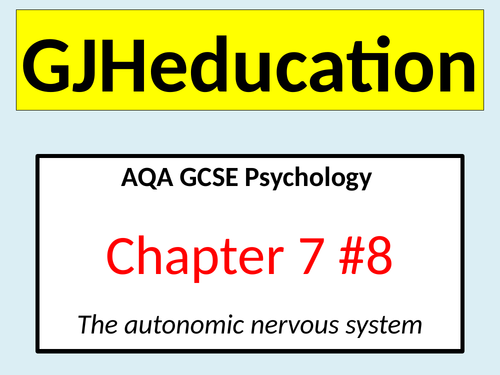




This lesson describes the actions of the sympathetic and parasympathetic divisions of the ANS. The PowerPoint and accompanying resources are part of the 8th lesson in a series of 17 lessons that cover the details of the brain and neuropsychology topic of the AQA GCSE Psychology specification.
The students were introduced to the autonomic nervous system (ANS) in the 1st lesson in this topic, so this lesson has been designed to deepen and further their understanding of the actions of this system. Students will come to understand that the sympathetic division is most active during times of stress whilst the parasympathetic division is most active during times of sleep and relaxation. Through a series of tasks including a fun quiz round, they will discover the actions of the two divisions and then be challenged to apply their understanding.
This topic of the brain and neuropsychology has proved particularly difficult for the students in recent years, so I have taken time to analyse the lesson sequencing. There’s a lot of content to absorb and to understand before moving onto the next part, so I’ve tried to ensure that cross topics links and prior knowledge checks run throughout the lessons. I have organised the lessons to run through the biology content first before moving onto the psychology parts as shown by the 17 lessons below:
#1 Organisation of the nervous system
#2 The structure and function of the cerebral lobes
#3 The cerebellum
#4 The structure and function of the sensory and motor neurones
#5 The relay neurones
#6 Synaptic transmission
#7 Excitation and inhibition at the synapse
#8 The autonomic nervous system
#9 The fight or flight response
#10 The somatic nervous system
#11 James-Lange theory of emotion
#12 James-Lange theory of emotion part 2
#13 Penfield’s study of the interpretative index
#14 Hebb’s theory of learning and neuronal growth
#15 An introduction to neuropsychology
#16 Brain scanning techniques
#17 Tulving’s gold memory study
Something went wrong, please try again later.
This resource hasn't been reviewed yet
To ensure quality for our reviews, only customers who have purchased this resource can review it
Report this resourceto let us know if it violates our terms and conditions.
Our customer service team will review your report and will be in touch.